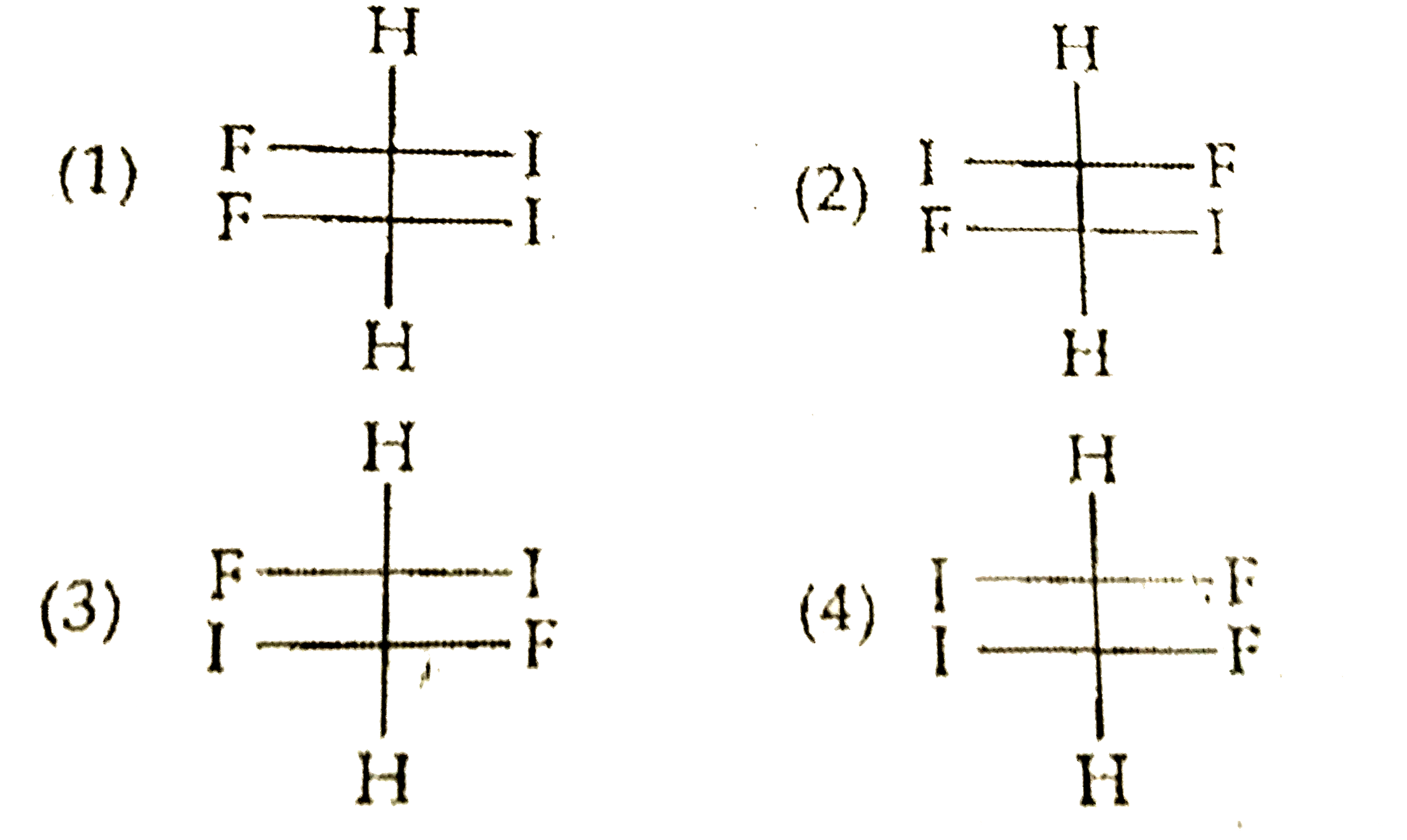Diane diol worked for several days to prepare compounds shown. She labelled and slept. When she got up all lables had slipped. Her friend Glycol said that They could be easily distuingished by two experiments. Which of the m were optically active.
How many products were obtained when each is treated with periodic acid. after experimentation Diane found the following results
1. Compounds A, E, F were optically active and B, C and D were optically inactive.
2. one product was obtained from the reaction of A, B and D with periodic acid.
3. Two products were obtained from the reaction of F with periodic acid.
4. C and E didnt react with periodic acid.
The structure of the compounds were

Answer the following based on the above observations,
On the basis of the observation which compounds cannot be distinguished ?
A
compounds C and F
B
compounds B and D
C
compounds B and C
D
compounds D and E
Text Solution
The correct Answer is:B
|
Updated on:21/07/2023
Topper's Solved these Questions
- BOOK - NARAYNACHAPTER - ALCOHOLS, ETHERS, PHENOLEXERCISE - C-39videos
ALCOHOLS, ETHERS, PHENOL
- BOOK - NARAYNACHAPTER - ALCOHOLS, ETHERS, PHENOLEXERCISE - Assertion Reaosn10videos
ALCOHOLS, ETHERS, PHENOL
- BOOK - NARAYNACHAPTER - ALCOHOLS, ETHERS, PHENOLEXERCISE - Comprehension-31videos
ALCOHOLS, ETHERS, PHENOL
- BOOK - NARAYNACHAPTER - 18TH GROUP ELEMENTSEXERCISE - LEVEL - VI34videos
18TH GROUP ELEMENTS
- BOOK - NARAYNACHAPTER - ALDEHYDES, KETONES & CARBOXYLIC ACIDSEXERCISE - CHECK YOUR GRASP6videos
ALDEHYDES, KETONES & CARBOXYLIC ACIDS
Similar Questions
Knowledge Check
- Question 1 - Select One
Diane diol worked for several days to prepare compounds shown. She labelled and slept. When she got up all lables had slipped. Her friend Glycol said that They could be easily distuingished by two experiments. Which of the m were optically active.
How many products were obtained when each is treated with periodic acid. after experimentation Diane found the following results
1. Compounds A, E, F were optically active and B, C and D were optically inactive.
2. one product was obtained from the reaction of A, B and D with periodic acid.
3. Two products were obtained from the reaction of F with periodic acid.
4. C and E didnt react with periodic acid.
The structure of the compounds were

Answer the following based on the above observations,
Which structure could be compound FAIIBIIICIVDVI - Question 2 - Select One
Diane diol worked for several days to prepare compounds shown. She labelled and slept. When she got up all lables had slipped. Her friend Glycol said that They could be easily distuingished by two experiments. Which of the m were optically active.
How many products were obtained when each is treated with periodic acid. after experimentation Diane found the following results
1. Compounds A, E, F were optically active and B, C and D were optically inactive.
2. one product was obtained from the reaction of A, B and D with periodic acid.
3. Two products were obtained from the reaction of F with periodic acid.
4. C and E didnt react with periodic acid.
The structure of the compounds were

Answer the following based on the above observations,
Which structure could be suggested for AAIIBIIICIVDVI - Question 3 - Select One
Which of the following is an optically active compound ?
AButan-1-olBPropan-1-olC2-ChlorobutaneD4-Hydroxyheptane
Which of the following compounds are optically active ?
View SolutionWhich of the following compound is optically active
View SolutionThe number of optically active products obtained from the complete ozonolysis of the given compound

is :View SolutionWhich of the following compounds will be optically active ?
View SolutionWhich of the following compounds is optically active ?
View Solution


